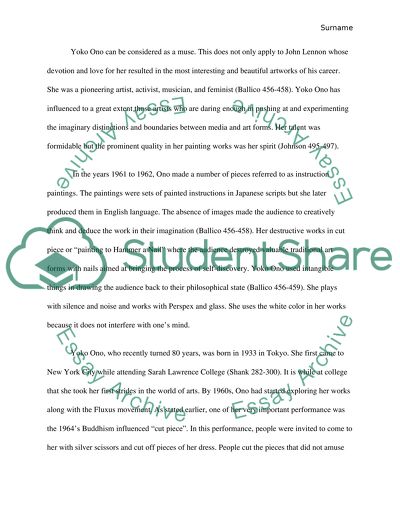Cite this document
(“Yoko Ono's Relationship with Popular Culture Essay”, n.d.)
Yoko Ono's Relationship with Popular Culture Essay. Retrieved from https://studentshare.org/visual-arts-film-studies/1633317-yoko-onos-relationship-with-popular-culture
Yoko Ono's Relationship with Popular Culture Essay. Retrieved from https://studentshare.org/visual-arts-film-studies/1633317-yoko-onos-relationship-with-popular-culture
(Yoko Ono'S Relationship With Popular Culture Essay)
Yoko Ono'S Relationship With Popular Culture Essay. https://studentshare.org/visual-arts-film-studies/1633317-yoko-onos-relationship-with-popular-culture.
Yoko Ono'S Relationship With Popular Culture Essay. https://studentshare.org/visual-arts-film-studies/1633317-yoko-onos-relationship-with-popular-culture.
“Yoko Ono'S Relationship With Popular Culture Essay”, n.d. https://studentshare.org/visual-arts-film-studies/1633317-yoko-onos-relationship-with-popular-culture.


